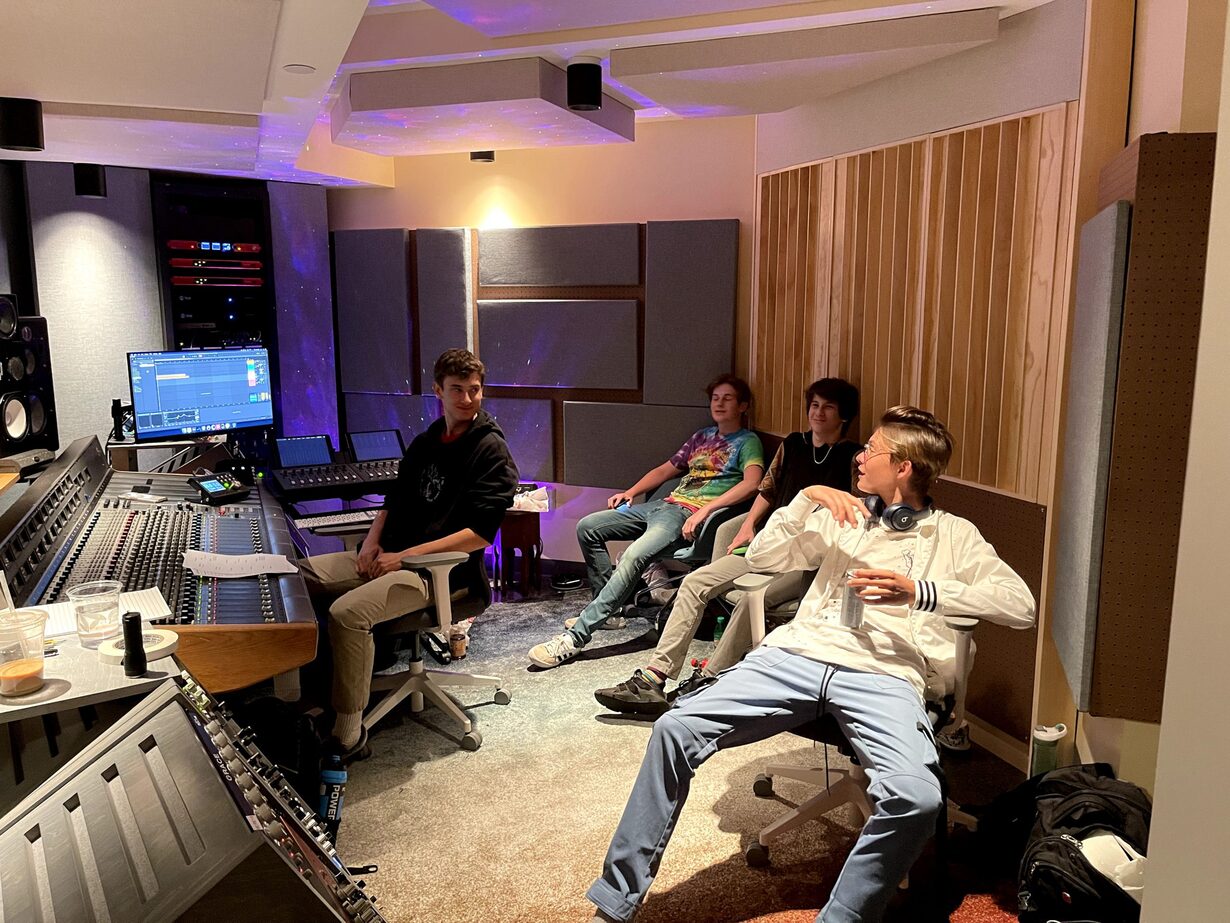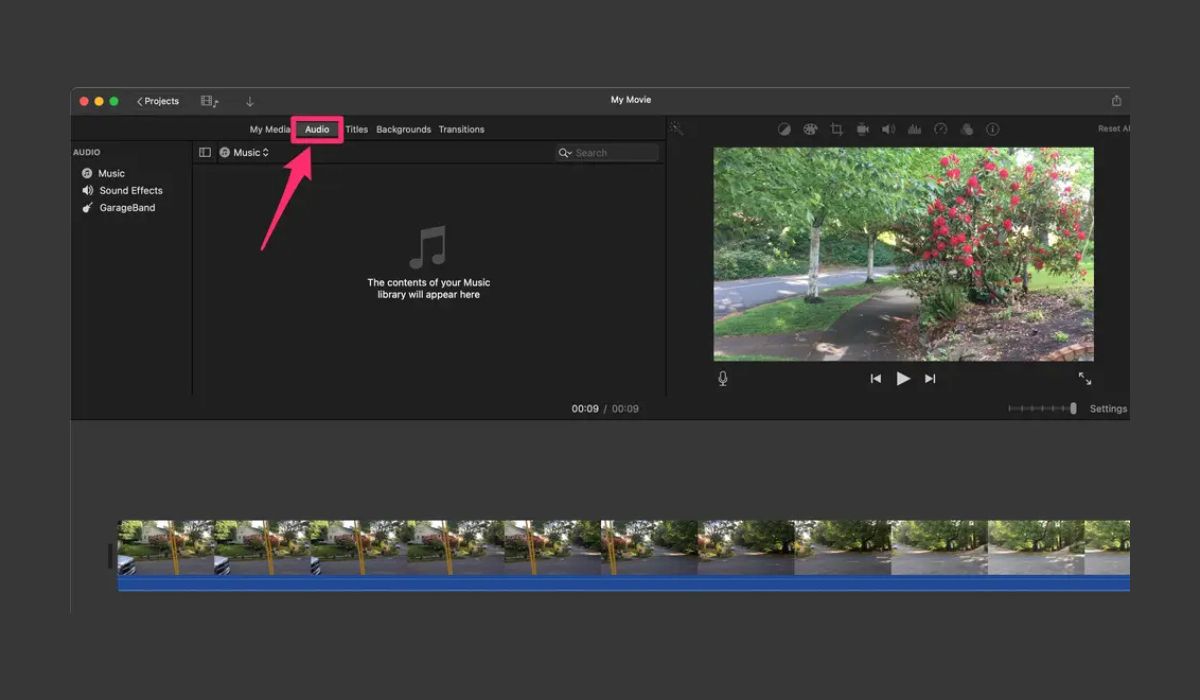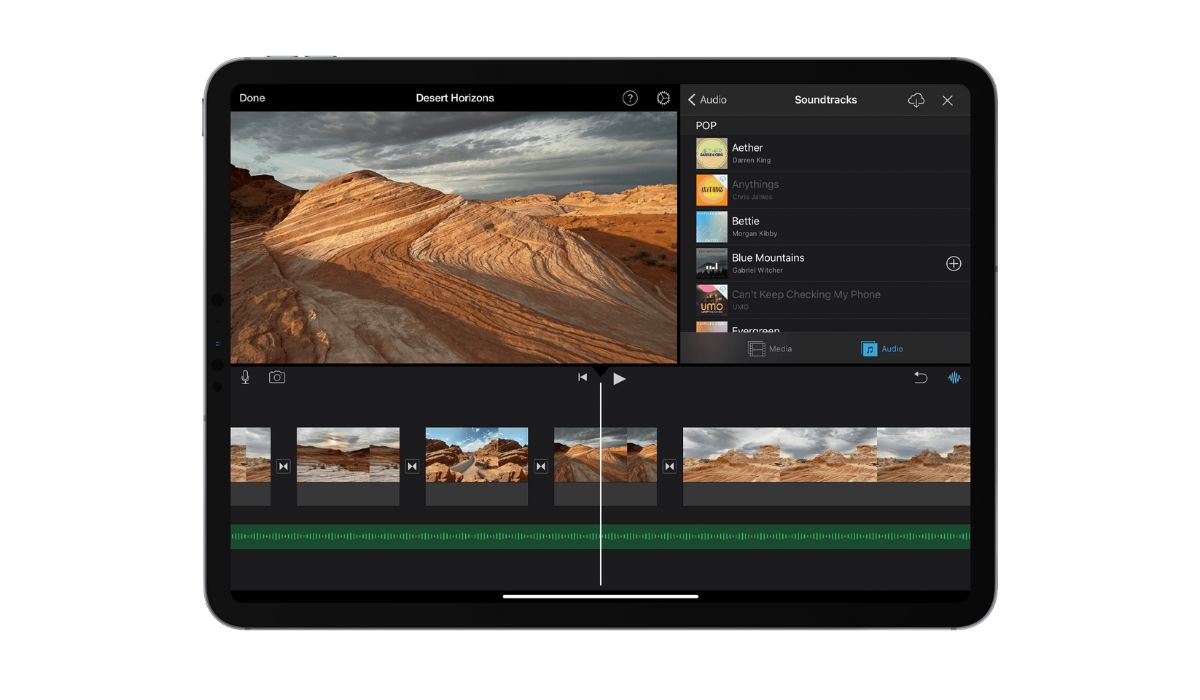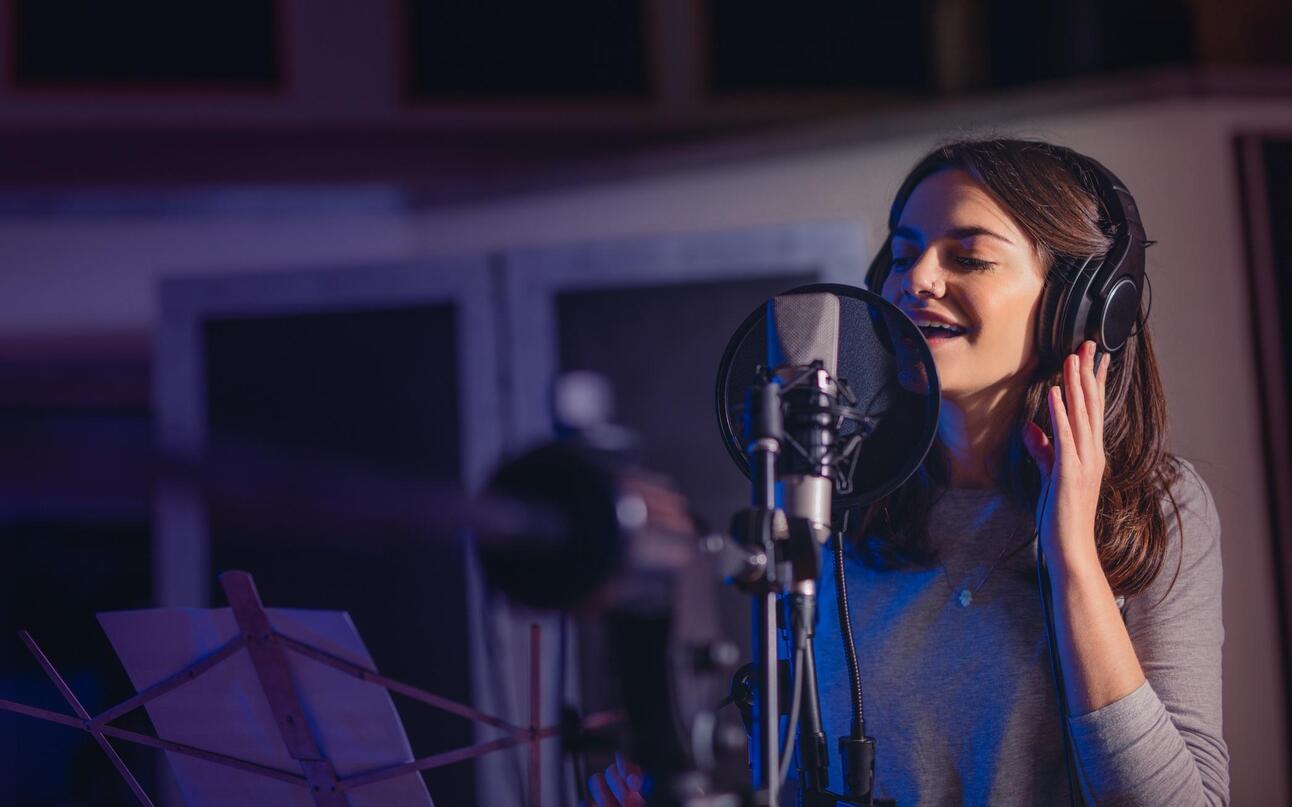Home>Production & Technology>Soundtrack>How To Make A Soundtrack


Soundtrack
How To Make A Soundtrack
Published: February 18, 2024
Learn how to create a captivating soundtrack for your project with our expert tips and techniques. Find out the secrets to composing a memorable soundtrack.
(Many of the links in this article redirect to a specific reviewed product. Your purchase of these products through affiliate links helps to generate commission for AudioLover.com, at no extra cost. Learn more)
Table of Contents
Introduction
Creating a compelling soundtrack is an art form that can elevate the emotional impact of visual media, whether it's a film, video game, or presentation. A well-crafted soundtrack has the power to immerse the audience in the narrative, evoke specific emotions, and enhance the overall viewing or listening experience. In this comprehensive guide, we will delve into the intricacies of crafting a captivating soundtrack, from selecting the right music to mastering the final mix.
Soundtracks serve as the auditory backdrop to the visual content, playing a pivotal role in shaping the audience's perception and engagement. Whether it's the haunting melodies that intensify the suspense in a thriller film or the upbeat rhythms that accompany a high-energy action sequence, the soundtrack is an indispensable element of storytelling.
Throughout this journey, we will explore the nuances of selecting the most fitting music for a project, the art of creating a cohesive sound, the impactful addition of sound effects, and the crucial steps of mixing and mastering to achieve a professional and polished result. By the end of this guide, you will gain valuable insights into the creative and technical aspects of soundtrack production, empowering you to craft immersive and resonant soundscapes for your own projects.
Let's embark on this enriching exploration of the art and science of soundtrack creation, where creativity and technical prowess converge to shape the auditory tapestry of visual storytelling. Whether you're a filmmaker, game developer, content creator, or simply an enthusiast eager to delve into the realm of sound design, this guide is tailored to equip you with the knowledge and inspiration to embark on your soundtrack creation journey.
Understanding the Purpose of a Soundtrack
Before diving into the intricacies of crafting a soundtrack, it’s essential to grasp the fundamental purpose it serves within various forms of visual media. A soundtrack is not merely background music; rather, it is a dynamic and integral component that significantly influences the audience’s emotional engagement and perception of the content.
Setting the Mood and Atmosphere: One of the primary functions of a soundtrack is to establish and reinforce the mood and atmosphere of a scene or an entire production. Whether it’s a suspenseful thriller, a heartwarming romance, or a high-octane action sequence, the music sets the tone and immerses the audience in the intended emotional experience.
Enhancing Emotional Impact: A well-crafted soundtrack has the power to evoke and amplify emotions. It can intensify the tension in a dramatic confrontation, evoke nostalgia in a flashback sequence, or uplift the spirits in a triumphant moment. By aligning the music with the narrative beats, the soundtrack becomes a potent tool for eliciting specific emotional responses from the audience.
Guiding the Audience’s Perception: Soundtracks play a crucial role in guiding the audience’s perception of a scene or character. Through leitmotifs, recurring musical themes associated with specific characters or concepts, the soundtrack can subtly influence the audience’s interpretation and anticipation of unfolding events, adding depth and complexity to the storytelling.
Seamless Immersion: When executed seamlessly, a soundtrack has the ability to transport the audience into the world of the story, blurring the lines between fiction and reality. It creates a cohesive auditory experience that complements the visual elements, fostering a deeper sense of immersion and engagement.
By understanding the multifaceted role of a soundtrack in visual media, creators can harness its potential to craft compelling and resonant experiences for their audience. The next step in this journey is to explore the art of selecting the right music to fulfill these critical functions and enhance the storytelling process.
Choosing the Right Music for Your Project
When it comes to crafting a captivating soundtrack, the process begins with the crucial task of selecting the right music to complement the visual content. The choice of music is not arbitrary; it requires careful consideration of various factors to ensure that the soundtrack harmonizes seamlessly with the narrative, setting the stage for a compelling auditory experience.
Understanding the Narrative: The first step in choosing the right music is to deeply understand the narrative, characters, and themes of the project. By immersing oneself in the story and its emotional nuances, creators can identify the specific moods, emotions, and pivotal moments that demand musical accompaniment.
Genre and Style: Different genres and styles of music evoke distinct emotions and atmospheres. Whether it’s the grandeur of an orchestral score, the intimacy of a solo piano piece, the energy of electronic beats, or the nostalgia of a retro synth sound, the choice of genre and style should align with the thematic essence of the project.
Character and Scene Dynamics: Each character and scene possesses unique dynamics that can be accentuated through music. By considering the personalities, motivations, and emotional arcs of the characters, as well as the pacing and tonal shifts within scenes, creators can select music that resonates with the audience on a deeper emotional level.
Symbolism and Leitmotifs: Music can serve as a symbolic language within a narrative, employing leitmotifs to represent characters, themes, or story elements. The strategic use of recurring musical motifs can imbue the soundtrack with layers of meaning, enriching the storytelling and fostering a sense of cohesion and continuity.
Licensing and Original Composition: Depending on the project’s scope and budget, creators must consider whether to license existing music or commission original compositions. Licensing popular tracks can enhance audience familiarity and emotional resonance, while original compositions offer tailored and exclusive musical expressions that align precisely with the project’s needs.
By carefully considering these factors and approaching the music selection process with a deep understanding of the narrative and emotional landscape, creators can lay a solid foundation for crafting a soundtrack that elevates the storytelling experience. The next phase of this journey delves into the art of creating a cohesive sound that seamlessly integrates the chosen music with the visual narrative.
Creating a Cohesive Sound
Once the right music has been selected, the next critical step in crafting a compelling soundtrack is to ensure that the chosen pieces coalesce into a cohesive and harmonious auditory tapestry. A cohesive sound is essential for maintaining the narrative flow, emotional resonance, and immersive quality of the visual content.
Structural Consistency: The soundtrack should exhibit structural consistency to align with the pacing and progression of the visual narrative. Whether it’s the recurring motifs that punctuate key moments or the gradual build-up of tension and release, the music should synchronize with the story’s ebb and flow, enhancing its impact.
Emotional Transitions: Smooth transitions between musical pieces are crucial for preserving the emotional continuity of the narrative. Whether shifting from a melancholic interlude to a triumphant crescendo or seamlessly segueing between contrasting moods, the transitions should feel natural and unobtrusive, preserving the audience’s emotional engagement.
Dynamic Range and Contrast: A well-crafted soundtrack leverages dynamic range and contrast to amplify the emotional impact of the visual content. From subtle, understated passages to bold and resonant climaxes, the interplay of dynamics creates a compelling sonic journey that mirrors the narrative’s emotional arcs and intensifies its pivotal moments.
Textural and Timbral Cohesion: The textures and timbres of the selected musical elements should complement each other, contributing to a cohesive sonic palette. Whether blending orchestral arrangements with electronic elements, integrating vocal performances, or incorporating unique sonic textures, the amalgamation should feel unified and purposeful.
Alignment with Visual Cues: The soundtrack should align seamlessly with visual cues and narrative beats, enhancing the audience’s perception and immersion. Whether synchronizing musical accents with on-screen actions, dialogue, or visual transitions, the auditory and visual elements should synergistically reinforce each other, amplifying the overall impact.
By meticulously crafting a cohesive sound that seamlessly integrates the selected music with the visual narrative, creators can elevate the storytelling experience and immerse the audience in a rich and resonant auditory journey. The next phase of this guide explores the impactful addition of sound effects to further enrich the sonic tapestry of the project.
Incorporating Sound Effects
While music forms the backbone of a soundtrack, the strategic integration of sound effects plays a pivotal role in enriching the auditory landscape and heightening the immersive quality of the visual content. Sound effects, when utilized thoughtfully, have the power to accentuate dramatic moments, evoke sensory experiences, and imbue scenes with a heightened sense of realism and impact.
Enhancing Atmosphere and Ambiance: Sound effects are instrumental in creating and reinforcing the environmental ambiance of a scene. Whether it’s the rustling of leaves in a tranquil forest, the bustling urban soundscape of a city street, or the immersive sounds of a bustling marketplace, these auditory elements enhance the sense of place and transport the audience into the heart of the narrative.
Emphasizing Actions and Movements: From the subtle creak of a door to the thunderous roar of an explosion, sound effects accentuate the physical actions and movements within a scene, adding a layer of realism and impact. These auditory cues not only enrich the sensory experience but also contribute to the audience’s visceral engagement with the visual content.
Heightening Dramatic Impact: Sound effects are adept at heightening the dramatic impact of pivotal moments within the narrative. Whether it’s the sharp clang of a sword in a climactic battle, the tension-inducing sounds of a suspenseful pursuit, or the poignant subtleties of a character’s emotional expressions, these auditory embellishments intensify the emotional and narrative resonance.
Conveying Emotional Subtext: Sound effects can convey nuanced emotional subtext, enriching the storytelling experience. The gentle patter of rain against a windowpane, the haunting echoes of a distant cry, or the tender rustle of a cherished memento can evoke profound emotional responses, adding depth and poignancy to the narrative.
Seamless Integration with Music: The seamless integration of sound effects with the musical score is essential for maintaining a cohesive auditory experience. Whether synchronizing the impact of sound effects with musical accents or orchestrating a symphony of auditory elements, the synergy between sound effects and music enhances the overall sonic tapestry.
By thoughtfully incorporating sound effects into the soundtrack, creators can enrich the auditory landscape, heighten the immersive quality of the visual content, and elevate the overall storytelling experience. The next phase of this guide delves into the crucial steps of mixing and mastering the soundtrack to achieve a professional and polished result.
Mixing and Mastering Your Soundtrack
Once the musical compositions and sound effects have been meticulously crafted, the final phase of creating a captivating soundtrack involves the intricate processes of mixing and mastering. Mixing and mastering are essential steps that ensure the optimal balance, clarity, and sonic integrity of the audio elements, culminating in a professional and polished auditory presentation.
Mixing: The mixing process involves blending and balancing individual audio tracks, including music and sound effects, to create a cohesive and harmonious sonic landscape. Through careful manipulation of volume, panning, equalization, and spatial effects, the mixer endeavors to achieve a balanced and immersive auditory experience that complements the visual narrative.
Dynamic Range and Spatial Placement: Crafting a compelling mix entails managing the dynamic range of the audio elements, ensuring that quiet passages retain clarity and impact while louder sections remain controlled and balanced. Additionally, spatial placement techniques, such as panning and spatial effects, are employed to create a sense of depth and dimension within the auditory canvas.
Frequency Balance and EQ: The frequency balance of the audio elements is meticulously refined through the application of equalization (EQ), ensuring that each sound occupies its rightful place within the sonic spectrum. By sculpting the tonal characteristics of individual tracks, the mixer strives to achieve clarity, warmth, and cohesion within the overall mix.
Mastering: The mastering process focuses on refining and enhancing the overall sonic presentation of the soundtrack. Through the application of multiband compression, equalization, stereo enhancement, and limiting, the mastering engineer fine-tunes the mix to achieve optimal tonal balance, clarity, and consistency across various playback systems.
Dynamic Processing and Loudness Optimization: Mastering involves dynamic processing techniques to ensure that the soundtrack maintains a consistent and impactful sonic presence. This includes controlling peaks, balancing dynamics, and optimizing the overall loudness to meet industry standards while preserving the integrity and impact of the audio elements.
Quality Assurance and Format Optimization: In addition to sonic refinement, mastering encompasses quality assurance checks to identify and rectify any technical imperfections or anomalies. Furthermore, the mastering engineer optimizes the soundtrack for various delivery formats, ensuring that it translates seamlessly across diverse playback systems and environments.
By meticulously executing the processes of mixing and mastering, creators can elevate their soundtrack to a professional standard, imbuing it with clarity, impact, and sonic integrity. The culmination of these efforts is a polished and immersive auditory experience that seamlessly complements the visual narrative, enriching the overall storytelling endeavor.
Conclusion
Embarking on the journey of crafting a compelling soundtrack is a creative endeavor that intertwines artistry and technical finesse, shaping the auditory landscape of visual storytelling. Throughout this comprehensive guide, we have navigated the intricacies of soundtrack creation, from the profound significance of music and sound effects to the meticulous processes of mixing and mastering. As we conclude this exploration, it is evident that a captivating soundtrack is far more than background music—it is a dynamic and integral force that enriches the narrative, evokes emotions, and immerses the audience in the world of the story.
At the heart of a compelling soundtrack lies the art of selecting the right music, understanding the narrative nuances, and weaving a cohesive sonic tapestry that harmonizes seamlessly with the visual content. The strategic incorporation of sound effects further enriches the auditory landscape, heightening the immersive quality and emotional impact of the storytelling experience. The meticulous processes of mixing and mastering culminate in a polished and professional presentation, ensuring the optimal balance, clarity, and sonic integrity of the audio elements.
Whether you are a filmmaker, game developer, content creator, or an enthusiast eager to delve into the realm of sound design, the insights gleaned from this guide empower you to embark on your soundtrack creation journey with confidence and creativity. By embracing the art and science of soundtrack production, you possess the tools to craft immersive and resonant soundscapes that elevate the emotional impact and narrative depth of your projects.
As you venture forth in your creative endeavors, remember that a compelling soundtrack transcends mere accompaniment—it is a symphonic companion to the visual narrative, a conduit for emotions, and a catalyst for immersive storytelling. By harnessing the transformative power of sound, you have the opportunity to captivate, inspire, and transport your audience on a rich and resonant auditory journey. Let the art of soundtrack creation be a testament to the boundless creativity and emotive resonance that soundscapes can evoke, enriching the storytelling experience and leaving an indelible impression on the hearts and minds of your audience.
May your future endeavors be imbued with the harmonious interplay of music, sound effects, and sonic mastery, creating soundtracks that resonate deeply and endure in the tapestry of visual storytelling.











